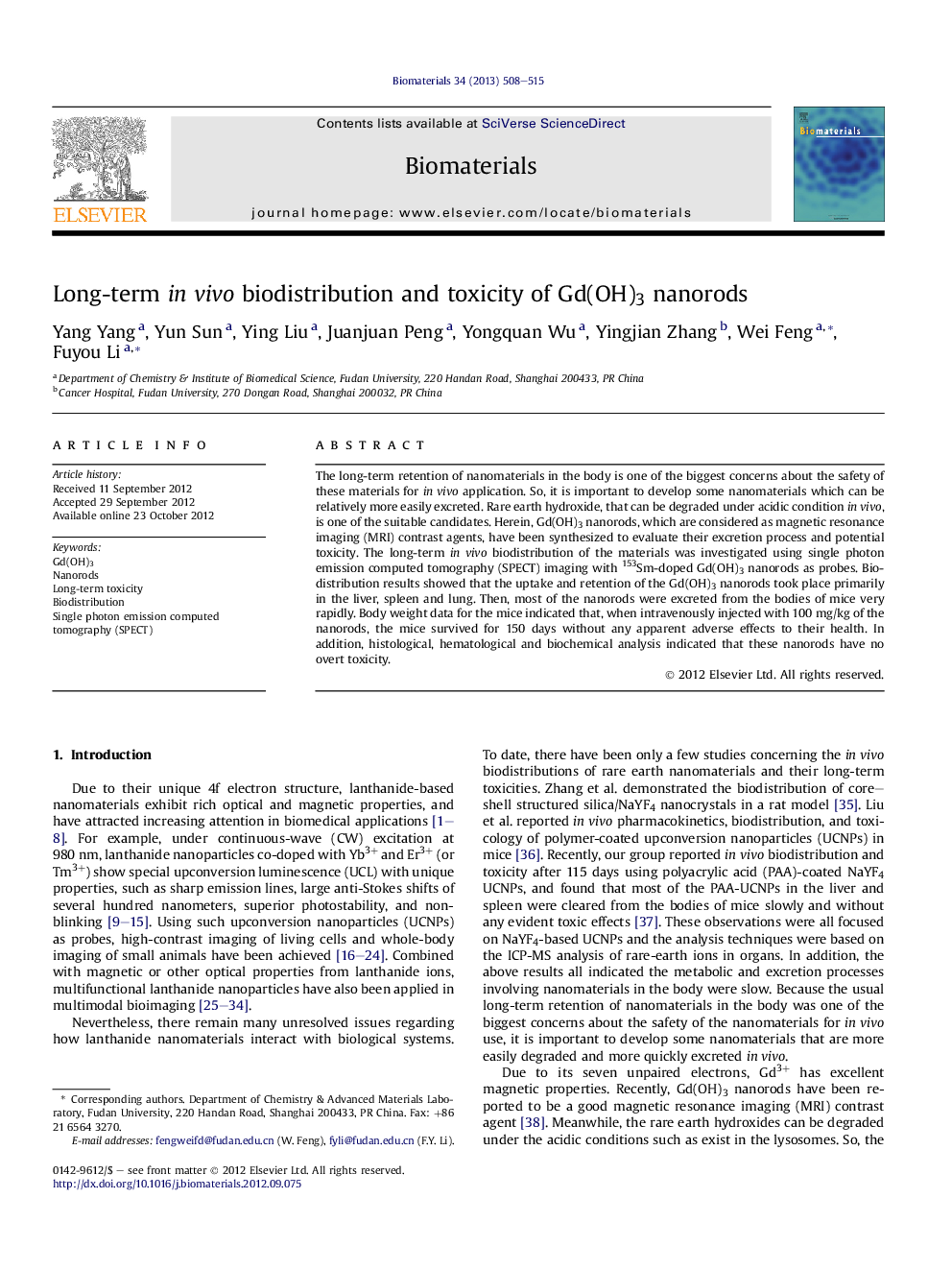| Article ID | Journal | Published Year | Pages | File Type |
|---|---|---|---|---|
| 7019 | Biomaterials | 2013 | 8 Pages |
The long-term retention of nanomaterials in the body is one of the biggest concerns about the safety of these materials for in vivo application. So, it is important to develop some nanomaterials which can be relatively more easily excreted. Rare earth hydroxide, that can be degraded under acidic condition in vivo, is one of the suitable candidates. Herein, Gd(OH)3 nanorods, which are considered as magnetic resonance imaging (MRI) contrast agents, have been synthesized to evaluate their excretion process and potential toxicity. The long-term in vivo biodistribution of the materials was investigated using single photon emission computed tomography (SPECT) imaging with 153Sm-doped Gd(OH)3 nanorods as probes. Biodistribution results showed that the uptake and retention of the Gd(OH)3 nanorods took place primarily in the liver, spleen and lung. Then, most of the nanorods were excreted from the bodies of mice very rapidly. Body weight data for the mice indicated that, when intravenously injected with 100 mg/kg of the nanorods, the mice survived for 150 days without any apparent adverse effects to their health. In addition, histological, hematological and biochemical analysis indicated that these nanorods have no overt toxicity.
